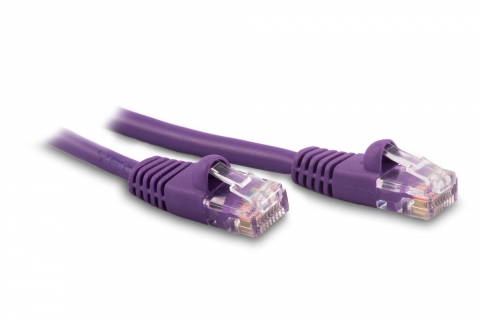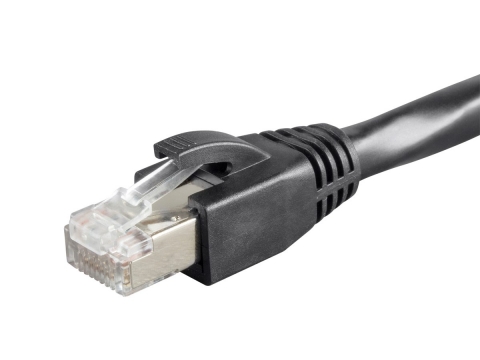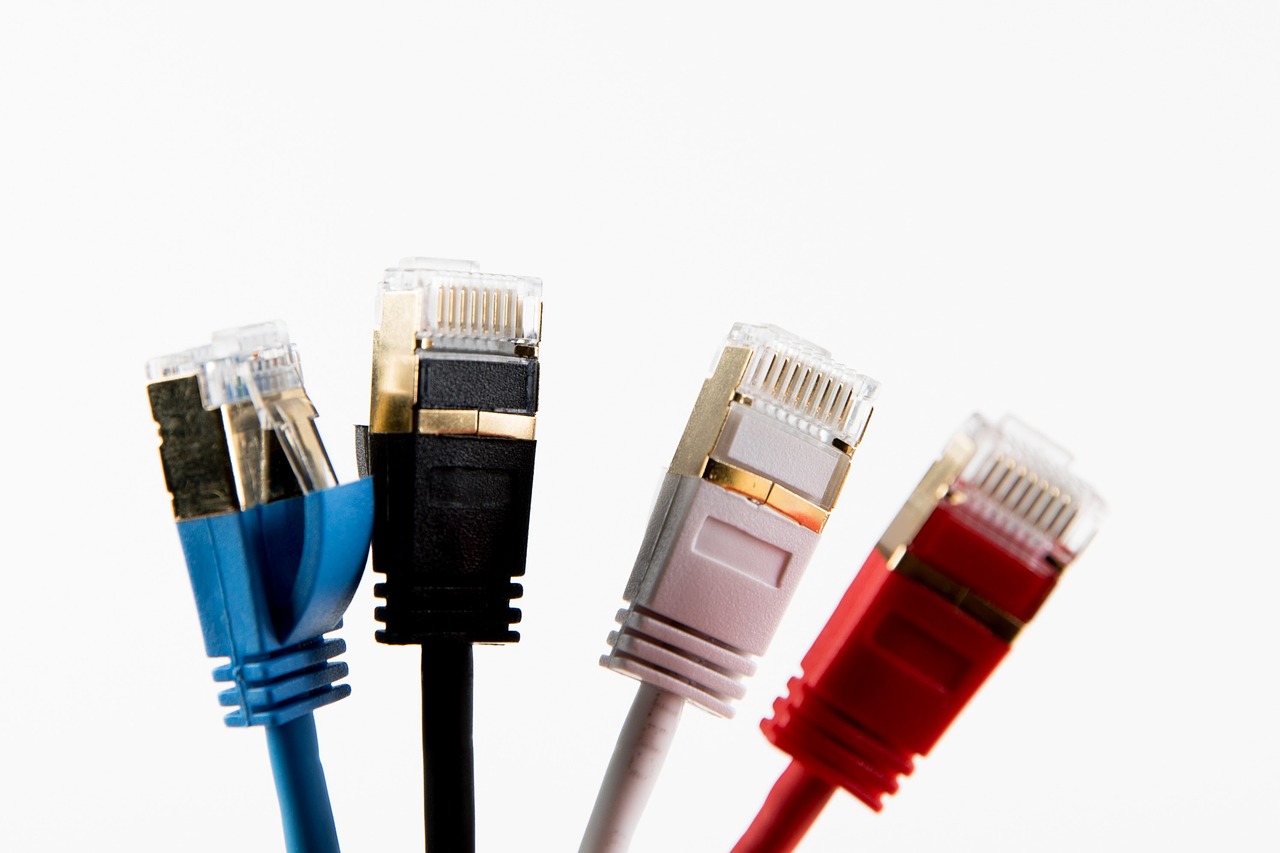Shop Cables for Sale - Fiber Optic Cables, Network Cables, Outdoor Cables, Bulk Ethernet Cables, Cat6 Cables, Cat5 Cables, Cat5e Cables, Crypto Cables and Data Center Cables.
Cat 6 Ethernet Cable Advantages: Speed and Reliability for Networking
Why Buy Cat6 Ethernet Cables?
Cat 6 Ethernet Cables are designed to meet the demands of high-speed data transfer and Internet connectivity.
by Vikas Dayal • June 28, 2024
Cat5e / Cat6 Cables, Network Patch Cables, Network Patch Cords
When selecting the right Ethernet cable for your home or office, performance is key. Cat 6 Ethernet Cables are designed to meet the demands of high-speed data transfer and Internet connectivity. These cables are capable of delivering enhanced performance with bandwidth capacities up to 250 MHz, which is a considerable improvement over previous cable standards. This translates to a robust network, less interference, and a dependable connection for activities such as streaming, gaming, and transferring large files.
Installing a Cat 6 Ethernet Cable in your setup involves more than just plugging it in. The right configuration ensures optimal performance. Whether you’re setting up a complex office network or simply improving your home internet connection, attention to detail during installation can prevent future issues. When you’re ready to purchase, the vast array of options can seem daunting, but a focus on quality and cost efficiency will guide you to the right choice. For dependable Category 6 Ethernet cables, cables.com offers a variety of options to fit your specific needs.
Key Takeaways
- Cat 6 cables are well-suited for high-speed Internet and offer substantial performance improvements.
- Proper installation is critical to maximizing the benefits of Cat 6 wiring in both home and office environments.
- Quality and cost should be considered when purchasing Ethernet cables from a reputable supplier

An Overview of Cat 6 Cables
Category 6 cables, commonly known as Cat 6, are a significant step up from their predecessors in terms of network performance and data transmission speeds. They are well-suited for modern networking requirements.
Understanding Cat 6 Standards
Cat 6 cables are designed to adhere to the stringent standards set by the Telecommunications Industry Association (TIA). They are capable of supporting frequencies up to 250 MHz and can handle data transfer rates of up to 10 Gbps over short distances. The Cat 6 ethernet cable is constructed of four twisted pairs of copper wire which helps minimize crosstalk and allows for higher speeds.
Benefits Over Cat 5 and Cat 5e
Cat 6 cables offer numerous improvements over Cat 5 and Cat 5e cables. While Cat 5e cables support data transfer rates of up to 1 Gbps, Cat 6 cables can handle bandwidth-intensive applications much more efficiently due to their higher data transfer rates. This makes Cat 6 ethernet cables particularly suitable for environments where multiple high-speed connections are in constant use.
Comparison with Cat 6A
The introduction of Cat 6A cables further extended the capabilities of the standard Cat 6. Cat 6A supports 10 Gigabit Ethernet over longer distances up to 328 feet, double that of standard Cat 6 cables, which are limited to 164 feet for 10 Gigabit speeds. As a result, Cat 6A cables can be more suitable for extensive network setups that require long-distance cabling without sacrificing speed.
When you're looking to upgrade your network, it's critical to select the right cable to support your needs. For quality category 6 ethernet cables, consider Cables.com as a reliable source for your networking requirements.
Technical Specifications
The technical specifications of the Cat 6 ethernet cable highlight its ability to support higher data transfer rates with reduced interference. High-quality Cat 6 cables, like those available at cables.com, reflect these enhanced capabilities.
Data Transfer and Bandwidth
Cat 6 ethernet cables are designed to facilitate data transfer rates of up to 10 Gigabits per second (Gbps) over a network. However, to achieve this maximum throughput, your cable length should typically not exceed 55 meters (around 180 feet). For distance beyond this, the maximum data transfer rate scales down to 1 Gbps at a length of 100 meters (328 feet). The increased bandwidth capacity of Cat 6, measured at 250 Megahertz (MHz), supports greater amounts of data transmitted over the network without lag or delay.
Frequency and Crosstalk Reduction
One significant improvement in Cat 6 cables is their enhanced performance in frequency and crosstalk reduction. The standard frequency for these cables is up to 250 MHz, which means they handle a higher level of signal frequency without degradation. To curb crosstalk, or signal interference between the twisted pairs within the cable, manufacturers incorporate a longitudinal separator. This design helps maintain the integrity of data transmissions by reducing the noise from adjacent wires within the cable.
Wire Pairs and AWG
Cat 6 cables consist of four twisted pairs of copper conductors, adhering to strict standards that minimize crosstalk. The gauge of these conductors is often measured by American Wire Gauge (AWG), with a range commonly between 22AWG to 24AWG. Thicker wires, such as 22AWG, typically provide better performance over longer distances due to their lower resistance, which is ideal for permanent in-wall installations or in data centers where long cable runs are common.
Installation and Setup Tips
Proper installation and setup are crucial for the optimal performance of Cat 6 ethernet cables whether you are configuring a home network or streamlining a data center's infrastructure.
Setting Up for Home Networks
When setting up your home network, the choice of Cat 6 ethernet cables is vital for future-proofing your Local Area Network (LAN). First things first, ensure you purchase high-quality cables from a reliable provider, such as cables.com. When running the cables, keep them away from power lines to prevent interference, and be mindful not to exceed the 100-meter maximum length to maintain signal integrity.
For home installations, it's often recommended that cables are run to a central location, such as a router or a patch panel, which then distributes the internet connection to various rooms. Here's a simple installation checklist:
- Measure the distance of cable needed, room to room.
- Purchase high-grade Cat 6 cables tailored for home use.
- Run cables through walls using conduits to protect from damage.
- Terminate cable ends with RJ45 connectors or to a patch panel.
- Test each connection with a cable tester for continuity and performance.
- Remember, proper labeling of cables can save you a lot of trouble when it comes to maintenance.
Considerations for Data Centers
In data centers, where precision and high performance are non-negotiable, the setup requires a deeper level of detail. Here, the use of patch panels becomes almost mandatory for organization and efficiency. These panels help manage the cables and allow for easier changes as network needs evolve.
Structured cabling systems are the backbone of a solid data center network. Here's a quick rundown to ensure a robust setup:
- Use horizontal and vertical cable management to maintain order and ease of access.
- Implement color coding for differentiating cable functions.
- Ensure proper airflow by avoiding cable congestion, which can lead to overheating.
- Make a habit of regular testing to monitor the network's performance and catch issues early.
By adhering to these guidelines, your data center will maintain high standards of connectivity, leading to improved reliability and scalability.

Enhancing Connection Quality
Enhancing the connection quality of your Cat 6 Ethernet cable involves mitigating interference and ensuring the use of quality materials for insulation. These factors contribute significantly to the performance of your network setup.
Shielding Against EMI
Electromagnetic interference (EMI) can deteriorate the signal quality of Ethernet cables, causing disruptions in data transmission. Cat 6 Ethernet cables may come as unshielded (UTP) or shielded (STP) varieties. UTP cables are commonly used in most office and home environments; however, for areas with a high possibility of EMI, shielded Cat 6 cables are preferential. They have an additional layer of foil or braided shielding that encases the twisted wire pairs.
This helps in preventing crosstalk between the cables and outside interference. When purchasing cables, selecting STP cables from cables.com ensures you receive products designed to reduce EMI's impact on your network's performance.
Recommended Use:
- STP: High-interference environments such as industrial areas or near heavy machinery.
- UTP: Typical office or home setups with minimal EMI.
Choosing the Right Insulation
The insulation material of a Cat 6 cable not only protects the inner conductors but also aids in maintaining signal integrity. High-quality insulation reduces the risk of damage and maintains the cable's structural integrity over time. PVC (Polyvinyl Chloride) and LSZH (Low Smoke Zero Halogen) are two common types of insulation materials used for Cat 6 cables.
- PVC: Cost-effective and provides good resistance to moisture and abrasion. Ideal for general-purpose use.
- LSZH: Emits less toxic and corrosive gas when exposed to fire, making it a safer choice for enclosed spaces.
When selecting your Category 6 Ethernet cables from cables.com, consider the environment in which the cable will be operated to make an informed decision about the type of insulation needed.
Purchasing and Cost Efficiency
When planning to upgrade your network with Cat 6 ethernet cables, your focus should ideally be on striking a balance between cost and quality. You need to understand how prices can vary and which factors contribute to cost efficiency without compromising on performance.
Evaluating Prices and Budget
Assessing Prices: The cost of Cat 6 ethernet cables can vary significantly based on length, shielding, and brand. Generally, a standard unshielded Cat 6 cable may be less expensive than a shielded counterpart, but keep in mind that the latter can offer better performance in environments with high electromagnetic interference.
Setting a Budget: Determine your budget by considering both current network needs and future scalability. If you intend to create a network that is future-proof for the next 5 to 10 years, then investing in higher-quality, slightly more expensive cables may save money in the long term by reducing the need for replacements.
Cost-Saving Tips:
- Buy in Bulk: Purchasing Cat 6 cables in bulk with 25 and 50 packs from reliable sources like cables.com can often lead to cost savings.
- Compare Lengths: Sometimes buying slightly longer cables than necessary can be more economical than custom lengths.
Selecting Providers and Products
Choosing the Right Provider: Selection is critical. A reputable provider like cables.com ensures quality and reliability. Check customer reviews and return policies before making your purchase.
Selecting the Right Products: Look for cables with clear specifications that meet or exceed industry standards. Remember that a Cat 6 cable is rated for gigabit speeds up to 10 Gbps over lengths up to 55 meters. Beyond that, speed may be affected, so consider the length and the environment where the cable will be used.
In summary, weigh your options carefully. Price and cost-efficiency are important, but they should not overshadow the need for quality and long-term network efficiency.
Frequently Asked Questions
Cat 6 Ethernet cables are a crucial component of modern networking setups, known for their ability to provide high-speed data transmission and enhanced bandwidth capabilities. Delve into the details of what makes these cables stand out, and how you can utilize them effectively within your network infrastructure.
What is the maximum data transfer speed of a Cat 6 Ethernet cable?
The Cat 6 Ethernet cable is designed to support data transfer speeds of up to 1 gigabit per second (Gbps) over a 100-meter run. This capability is paired with a bandwidth capacity of up to 250 megahertz (MHz), enabling smooth and efficient network performance for your high-demand applications.
Can you explain the color-coding standards for wiring Cat 6 Ethernet cables?
When wiring Cat 6 Ethernet cables, the color coding follows a standardized pattern to ensure proper alignment and connectivity. The two common standards are T568A and T568B. Each standard has a specific order of wire colors used for the pins in the connector, which must be followed to maintain consistent network communication.
What is the proper way to wire a Cat 6 Ethernet cable to a connector?
To wire a Cat 6 Ethernet cable to a connector correctly, you need to strip the cable insulation, untwist the wire pairs, and arrange them according to either the T568A or T568B standard. The wires must then be inserted into the RJ45 connector in precise order and crimped firmly to secure the connection.
Can you provide a wiring diagram for a Cat 6 Ethernet cable?
Certainly, a wiring diagram can illustrate the exact order and alignment of the wires within a Cat 6 Ethernet cable. Typically, diagrams show both T568A and T568B color schemes, highlighting the corresponding pins and colors for the cable to be wired correctly.
Where can I purchase a 1000ft bulk Cat 6 Ethernet cable?
For large-scale networking projects, you can purchase a 1000ft bulk Cat 6 Ethernet cable online. Cables.com offers a variety of options in bulk lengths to cater to extensive network installations and ensure you have sufficient cabling for your setup.
What are the differences in performance between Cat 6 and Cat 7 Ethernet cables?
Comparing Cat 6 and Cat 7 Ethernet cables, the primary differences lie in data transfer speed and bandwidth. Cat 7 cables are designed for speeds up to 10 Gbps over 100 meters and a higher bandwidth of up to 600 MHz. These enhancements provide an improved network experience with the capability to support future technological advancements.











